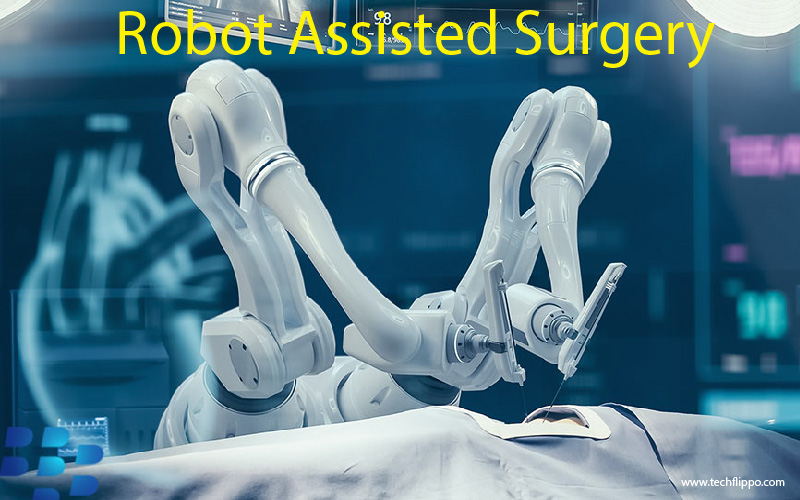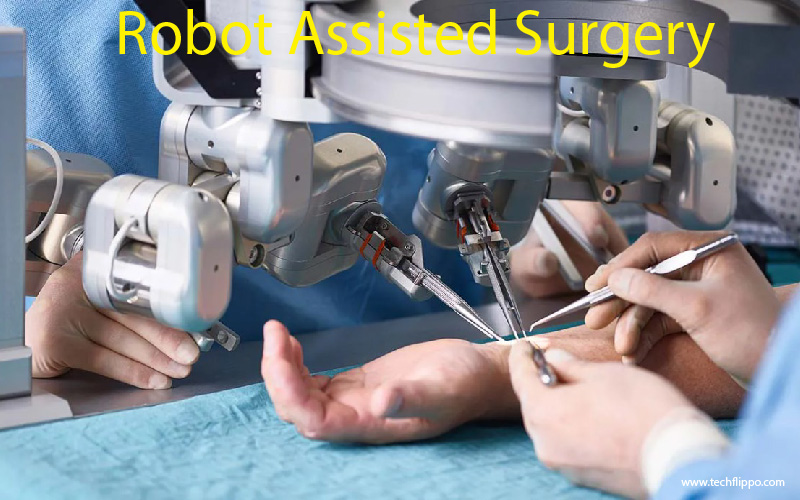A Comprehensive Guide to Robot Assisted Surgery and Its Benefits
Welcome to the cutting-edge world of Robot Assisted Surgery! Imagine a future where precision meets innovation in the operating room, paving the way for safer and more efficient procedures. In this comprehensive guide, we will delve into the fascinating realm of robot-assisted surgeries – exploring their history, types, benefits, misconceptions, and what lies ahead in this rapidly evolving field. Get ready to uncover how robots are revolutionizing the healthcare industry and transforming patient outcomes. Let’s embark on this exciting journey together!

History and Development of Robot Assisted Surgery
The history and development of robot-assisted surgery is an intriguing journey that dates back to the 1980s. The first robotic surgical system, PUMA 560, was used to perform neurosurgical biopsies with great precision.
Over time, advancements in technology led to the creation of more sophisticated systems like the da Vinci Surgical System. This groundbreaking innovation revolutionized minimally invasive surgery by offering enhanced dexterity and visualization for surgeons.
As the demand for less invasive procedures grew, so did the evolution of robot-assisted surgery. Surgeons began utilizing robots for a wide range of specialties including urology, gynecology, and cardiothoracic surgeries.
Today, robot-assisted surgery continues to push boundaries with ongoing research and development aimed at improving patient outcomes and expanding surgical capabilities. The future holds exciting possibilities as technology continues to progress in this dynamic field.
Types of Robot Assisted Surgeries
Robot-assisted surgery has revolutionized the medical field by offering various types of procedures that were once only possible through traditional methods. One common type is robotic prostatectomy, a minimally invasive surgery for treating prostate cancer with enhanced precision and quicker recovery times. Another prevalent procedure is robot-assisted hysterectomy, which involves the removal of the uterus using robotic arms controlled by a skilled surgeon. Additionally, robot-assisted cardiac surgeries are becoming increasingly popular for heart conditions like mitral valve repair or coronary artery bypass grafting due to their high level of accuracy and reduced risk compared to conventional approaches.
Furthermore, robot-assisted gynecologic surgeries such as myomectomies or endometriosis treatments provide patients with less pain and scarring post-operation. Orthopedic procedures like knee replacements can also benefit from robotic assistance, ensuring precise implant placement for improved outcomes. Moreover, head and neck surgeries utilizing robots offer better visualization in delicate areas while minimizing trauma to surrounding tissues.
In essence, the versatility of robot-assisted surgeries spans across various medical specialties, promising patients safer alternatives with enhanced results.
Advantages of Robot Assisted Surgery
Robot-assisted surgery offers numerous advantages that benefit both patients and surgeons. One key advantage is enhanced precision, as robotic systems can perform delicate procedures with accuracy not always achievable through traditional methods. This precision often leads to reduced blood loss during surgeries, shorter recovery times for patients, and ultimately better outcomes.
Additionally, robot-assisted surgery allows for improved visualization of the surgical site. The high-definition 3D imaging provided by robotic systems enables surgeons to see details more clearly and navigate complex anatomical structures with greater ease. This enhanced visualization contributes to safer procedures and helps minimize the risk of complications.
Another advantage of robot-assisted surgery is increased dexterity. The robotic arms used in these procedures can make movements that are beyond the capabilities of the human hand, allowing for more intricate maneuvers during surgery. This level of dexterity can be especially beneficial in tight or hard-to-reach areas within the body.
Furthermore, robot-assisted surgery offers a minimally invasive approach to many procedures. Smaller incisions result in less pain, reduced scarring, and faster recovery times compared to open surgeries. Patients undergoing minimally invasive robotic procedures often experience shorter hospital stays and a quicker return to their normal activities post-surgery.
The advantages of robot-assisted surgery continue to revolutionize the field of medicine by improving patient outcomes and enhancing surgical techniques.

Common Misconceptions about Robot Assisted Surgery
Many people have misconceptions about robot-assisted surgery, often fueled by misinformation or lack of understanding. One common myth is that robots perform the surgeries autonomously without human supervision. In reality, surgeons control the robotic system every step of the way, enhancing precision and control.
Another misconception is that robot-assisted surgeries are prohibitively expensive. While initial costs may be higher than traditional procedures, they can lead to shorter hospital stays and faster recovery times, ultimately reducing overall healthcare expenses in the long run.
Some also worry that robot-assisted surgery lacks a personal touch compared to traditional methods. However, these systems allow for smaller incisions and less tissue damage, leading to quicker healing and minimal scarring – factors that can greatly benefit patients in their recovery process.
It’s crucial to separate fact from fiction when considering robot-assisted surgery options. By understanding the technology and its benefits accurately, individuals can make informed decisions about their healthcare with confidence.
The Future of Robot Assisted Surgery
As technology advances at a rapid pace, the future of robot-assisted surgery holds great promise. Innovations in robotics and artificial intelligence are continually enhancing the precision and capabilities of surgical robots. Surgeons are increasingly able to perform complex procedures with greater accuracy and control, leading to improved patient outcomes.
In the coming years, we can expect to see further integration of virtual reality and augmented reality technologies into robot-assisted surgeries. These advancements will provide surgeons with enhanced visualization tools, allowing for more precise navigation during procedures. Additionally, the development of smaller and more dexterous robotic instruments will enable surgeons to access hard-to-reach areas within the body with ease.
Furthermore, telemedicine is likely to play a larger role in the future of robot-assisted surgery. Remote guidance from expert surgeons could help expand access to specialized care in underserved regions around the world. The future of robot-assisted surgery is bright, offering new possibilities for improving patient care and advancing medical practices globally.
Conclusion
As technology continues to advance, robot-assisted surgery is paving the way for more precise and less invasive procedures. With its numerous benefits such as improved accuracy, shorter recovery times, and reduced risk of complications, robot-assisted surgery is revolutionizing the field of medicine.
While there are still misconceptions surrounding this innovative approach to surgery, it’s essential to understand that robots are tools used by highly skilled surgeons to enhance their capabilities rather than replace them. The future of robot-assisted surgery looks promising with ongoing research and advancements in technology aimed at improving patient outcomes even further.
Robot-assisted surgery has already made a significant impact on the medical industry and will continue to do so in the years to come. As more healthcare facilities adopt this cutting-edge technology, patients can look forward to safer procedures and better results. Embracing this transformative trend in healthcare can ultimately lead to enhanced patient care and improved surgical outcomes.